Related Research Articles

Imperial Chemical Industries (ICI) was a British chemical company. It was, for much of its history, the largest manufacturer in Britain. It was formed by the merger of four leading British chemical companies in 1926. Its headquarters were at Millbank in London. ICI was a constituent of the FT 30 and later the FTSE 100 indices.

A pigment is a powder used to add color or change visual appearance. Pigments are completely or nearly insoluble and chemically unreactive in water or another medium; in contrast, dyes are colored substances which are soluble or go into solution at some stage in their use. Dyes are often organic compounds whereas pigments are often inorganic. Pigments of prehistoric and historic value include ochre, charcoal, and lapis lazuli.
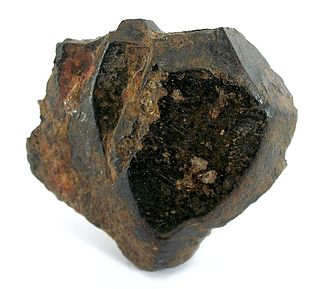
Ilmenite is a titanium-iron oxide mineral with the idealized formula FeTiO
3. It is a weakly magnetic black or steel-gray solid. Ilmenite is the most important ore of titanium and the main source of titanium dioxide, which is used in paints, printing inks, fabrics, plastics, paper, sunscreen, food and cosmetics.

Titanium dioxide, also known as titanium(IV) oxide or titania, is the inorganic compound derived from titanium with the chemical formula TiO
2. When used as a pigment, it is called titanium white, Pigment White 6 (PW6), or CI 77891. It is a white solid that is insoluble in water, although mineral forms can appear black. As a pigment, it has a wide range of applications, including paint, sunscreen, and food coloring. When used as a food coloring, it has E number E171. World production in 2014 exceeded 9 million tonnes. It has been estimated that titanium dioxide is used in two-thirds of all pigments, and pigments based on the oxide have been valued at a price of $13.2 billion.

Teesside is a built-up area around the River Tees in North East England, split between County Durham and North Yorkshire. The area contains the towns of Middlesbrough, Stockton-on-Tees, Billingham, Redcar, Thornaby-on-Tees, and Ingleby Barwick. Teesside's economy was once dominated by heavy manufacturing until deindustrialisation in the latter half of the 20th century. Chemical production continues to contribute significantly to Teesside's economy.

Billingham is a town and civil parish in County Durham, England. The town is on the north side of the River Tees and is governed as part of the Borough of Stockton-on-Tees unitary authority. It had a population of 35,165 in the 2011 Census.

Tees Valley is a combined authority area in Northern England, around the lower River Tees. The area is not a geographical valley; the local term for the valley is Teesdale. The combined authority covers five council areas: Darlington, Hartlepool, Middlesbrough, Redcar and Cleveland and Stockton-on-Tees.
Huntsman Corporation is an American multinational manufacturer and marketer of chemical products for consumers and industrial customers. Huntsman manufactures assorted polyurethanes, performance products, and adhesives for customers like BMW, GE, Chevron, Procter & Gamble, Unilever and Walkaroo. With global headquarters in The Woodlands, Texas, it operates more than 60 manufacturing, R&D and operations facilities in over 25 countries and employ approximately 7,000 associates across three business divisions. Huntsman Corporation had 2023 revenues of approximately $6 billion.
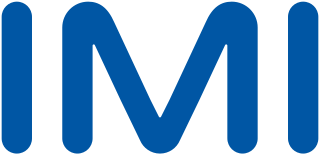
IMI plc, formerly Imperial Metal Industries, is a British-based engineering company headquartered in Birmingham, England. It is listed on the London Stock Exchange and is a constituent of the FTSE 100 Index.
Tronox Limited is an American worldwide chemical company involved in the titanium products industry with approximately 6,500 employees. Following its acquisition of the mineral sands business formerly belonging to South Africa's Exxaro Resources, Tronox is the largest fully integrated seller and marketer of titanium dioxide (TiO2) pigment, which provides brightness to applications such as coatings, plastics and paper. Tronox also sells titanium ore – the main feedstock of titanium dioxide - and zircon directly to customers.
Travancore Titanium Products Ltd (TTP) is the leading manufacturer of anatase grade titanium dioxide in India. The company was incorporated in 1946 at Thiruvananthapuram, the capital of Kerala, India on the initiative the then Travancore King, Sree Chithira Thirunal.
Wellesley is a locality in the Bunbury region of Western Australia, about 10 km north-east of Australind. Its local government area is the Shire of Harvey. It is bordered on the south and east by the Brunswick River and the Wellesley River. The main feature of the locality is the Kemerton Industrial Park.
Lucky Core Industries Limited, previously known as ICI Pakistan Limited, is a Pakistani conglomerate company headquartered in Karachi, Pakistan. It manufactures polyester, pharmaceutical, agrochemical, soda ash, and veterinary medicine.

Titanium white is a family of white pigments composed primarily of titanium dioxide. It is the most widely used white pigment in contemporary artistic applications because of its affordability, low toxicity, and high hiding power. Though the term titanium white most often refers to pigments containing titanium dioxide, it can also describe any white pigment that contains a titanium compound.
Commodity chemicals are a group of chemicals that are made on a very large scale to satisfy global markets. The average prices of commodity chemicals are regularly published in the chemical trade magazines and web sites such as Chemical Week and ICIS. There have been several studies of the scale and complexity of this market for example in the USA.
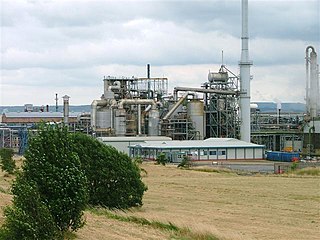
The Billingham Manufacturing Plant is a large chemical works based in the Borough of Stockton-on-Tees, England. In agricultural terms, it is one of the most important factories in Britain.
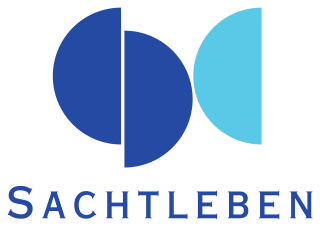
Sachtleben Chemie is a chemicals producer, with its primary focus on the production of white pigments, fillers and extenders. The company employs some 2,200 persons and achieves annual sales of around 820 million euros (2012). Sachtleben has been a member of the multinational Venator group since 2017. The company's corporate history reaches back over 130 years. Sachtleben produces particles using titanium dioxide, zinc sulfide and barium sulfate as the chemical basis, and markets these products worldwide. The principal applications for Sachtleben products include man-made fibers, paints and other coatings, plastics, and paper. Sachtleben also supplies special particles to the foodstuffs, pharmaceuticals and cosmetics industries, and has interests in the fields of chromatography, nanotechnology, catalysis, and the production of building materials. The company leads the world in special titanium dioxide grades for printing inks and for the cosmetics, pharmaceuticals and food industries. The production facilities at all three locations apply the sophisticated sulfate-route process.
The south bank of the Humber Estuary in England is a relatively unpopulated area containing large scale industrial development built from the 1950s onward, including national scale petroleum and chemical plants as well as gigawatt scale gas fired power stations.
The chemical industry in the United Kingdom is one of the UK's main manufacturing industries. At one time, the UK's chemical industry was a world leader. The industry has also been environmentally damaging, and includes radioactive nuclear industries.
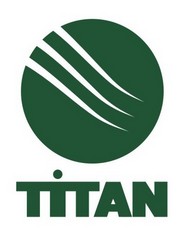
Crimea TITAN is the largest manufacturer of titanium dioxide pigment in Eastern Europe. It is located in Armyansk, Crimea.
References
- ↑ BTP The Times 26 February 1962 page ii
- 1 2 3 Gerald Markowitz, David Rosner. Deceit and Denial, the deadly politics of industrial pollution. University of California Press, New York 2003v ISBN 0520240634
- ↑ Imperial Chemical Industries The Times 20 April 1934 page 22
- ↑ Imperial Smelting Corporation The Times 6 November 1933 page 22
- ↑ Imperial Smelting Corporation The Times 13 November 1934 page 21
- ↑ Capital for Paint Expansion The Times 31 March 1948 page 8
- ↑ BTP The Times 16 November 1964 page ix
- ↑ A decade of growth by BTP The Times 1 August 1966 page 16
- ↑ Tioxide International The Times 11 October 1971 page IV
- ↑ British Titan Limited The Times 23 September 1975 page 21
- ↑ Summers, Merv. "Tioxide". The Companion to Tasmanian History . University of Tasmania . Retrieved 27 May 2020.
- ↑ Titanium faces slower growth The Times 8 April 1968 page 24
- ↑ The Times 2 December 1977 page 28
- ↑ Tioxide sells The Times 23 February 1994 page 26
- 1 2 Green bill may cost ICI firm £290m The Times 16 May 1991 page 26
- ↑ Cookson seeks £83m in cash call The Times 22 March 1991 page 25
- ↑ How green grows industry The Times 10 March 1992 page 29
- ↑ ICI's Tioxide agrees $200m Kronos deal The Times 2 February 1993 page 23
- ↑ ICI planning sell-offs to fund £5bn Unilever deal The Times 8 May 1997 page 25
- ↑ ICI makes disposals of £1.7bn to Huntsman The Times 16 April 1999 page 27